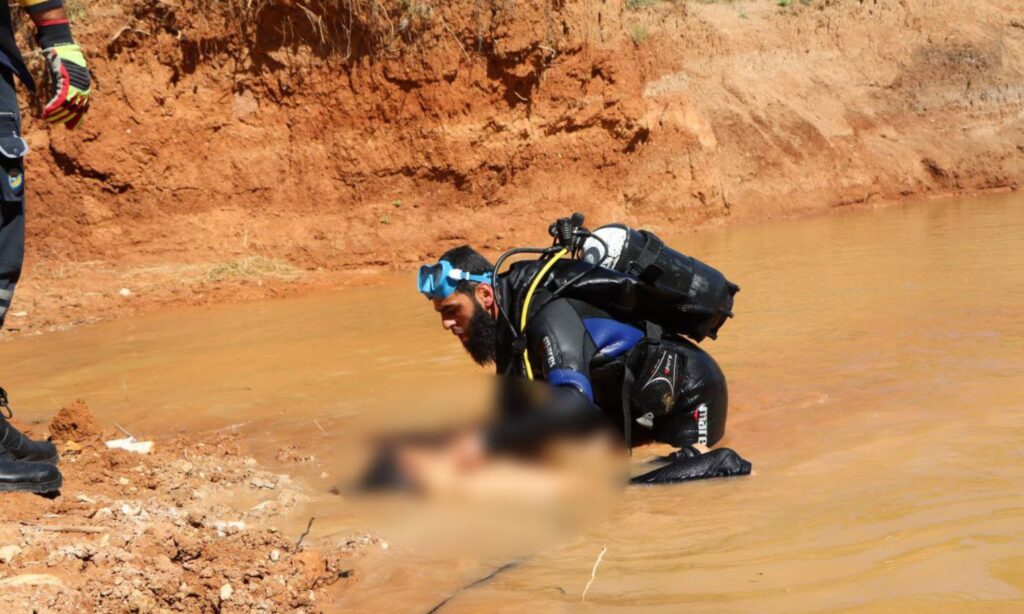Drowning incidents that the Syria Civil Defence teams responded to have resulted in the death of 15 civilians in northwestern Syria since the beginning of this year until June 7.
According to statistics obtained by Enab Baladi from the Civil Defence, 15 people drowned in water bodies (rivers, lakes, water ponds, water canals), including children, while the rescue agency teams saved three children from near drowning.
Since the beginning of this year, 2024, until June 7, the Civil Defence teams have responded to more than 30 distress calls related to water bodies. The number of drowning incidents has begun to increase with the start of the summer season and the rise in temperatures this year.
Feelings of sadness prevailed among residents in northern Syria after a passenger bus fell into the Orontes River in the Ayoun Ara area in the Darkush countryside, west of Idlib, resulting in seven deaths and 20 injuries on June 5.
After about six hours of work, the land and water search and rescue operations ended due to reduced visibility in the river water, varying depths, and the steep rocky nature of the area, making it difficult to detect safe paths at night and ensuring there were no missing persons after matching the total number of bus passengers with the number of victims, both injured and deceased.
Northwestern Syria consistently witnesses drowning incidents, and the Civil Defence continuously issues warnings about the unsuitability and extreme danger of all water bodies in the area for swimming.
Avoiding such situations relies mainly on awareness of the danger posed by these water bodies, even to experts, due to their rugged terrain, the abundance of plants, and the cold temperatures of the water, which often lead to muscle cramps and, consequently, an inability to swim and the risk of drowning.
People also often visit these water bodies without safety and security equipment such as life rings, inflatable tires that aid in floating, and a tethered rope that helps save the drowning person by pulling them immediately, according to the Civil Defence.
In July 2023, the World Health Organization (WHO) mentioned in a statement on the occasion of World Drowning Prevention Day that over 90% of drowning deaths occur in low- and middle-income countries, with children aged one to nine experiencing the highest drowning rates.

